一、基本结构
神经网络基本结构
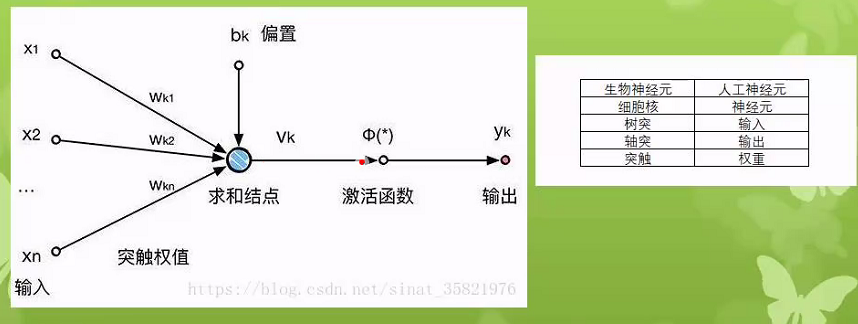
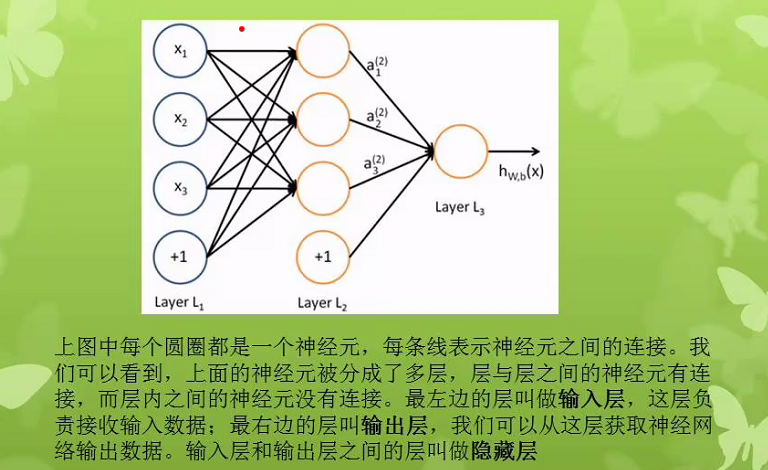
何为深度学习?
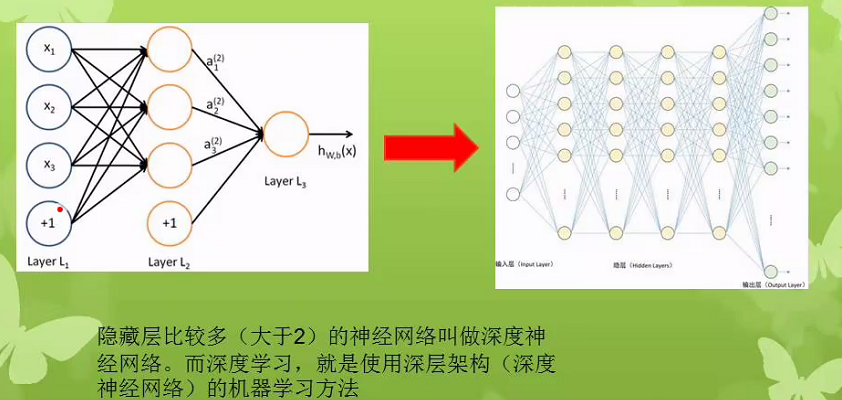
二、感知器和激活函数
感知器
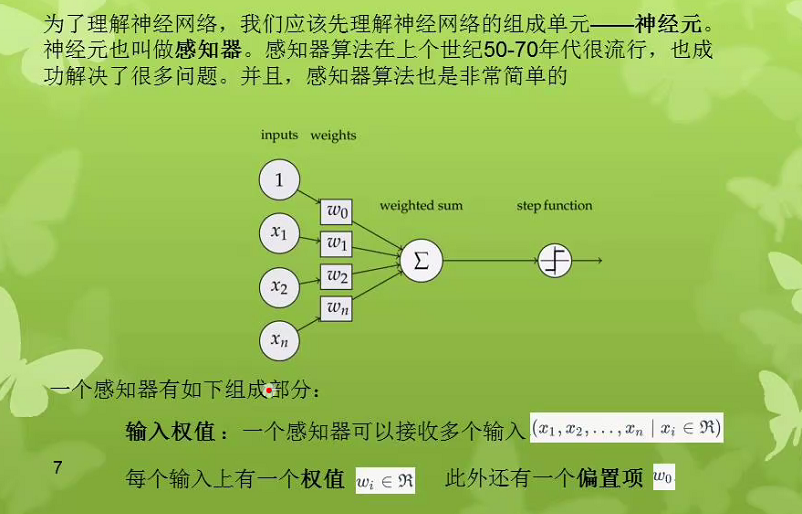
激活函数(其中w和x为向量点乘;b为偏置,w0)
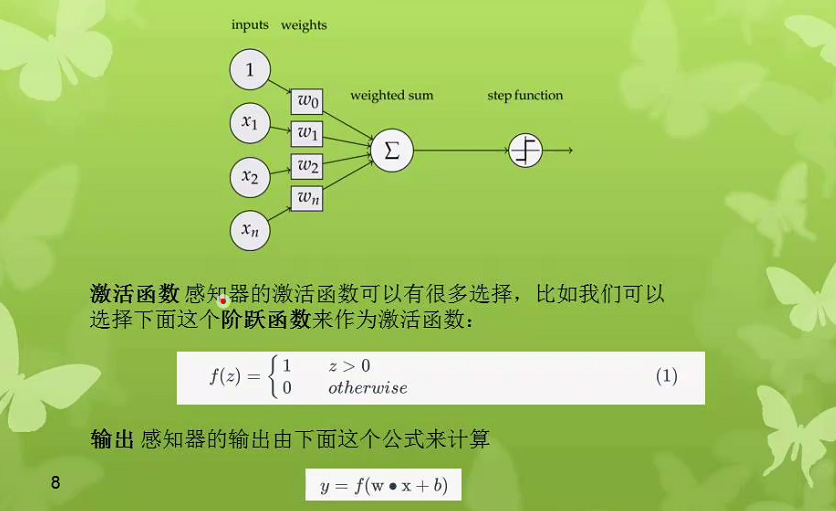
激活函数的选择
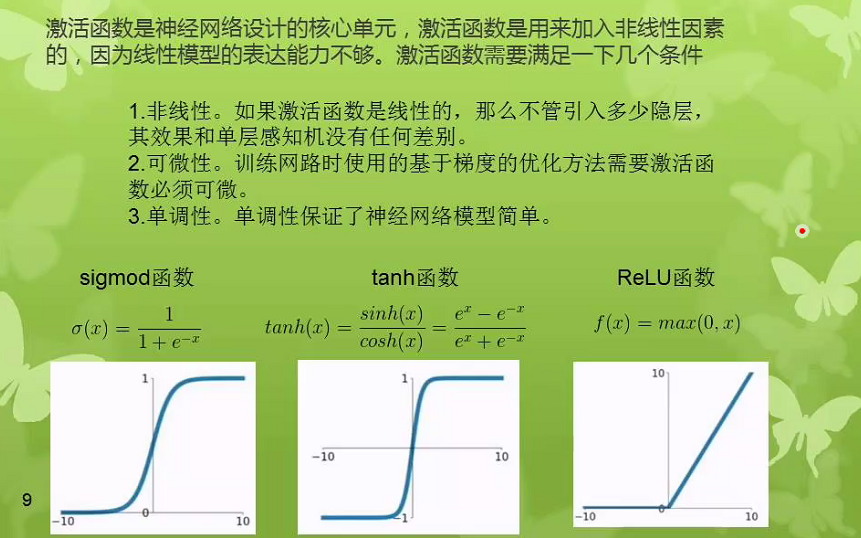
三、感知器的训练
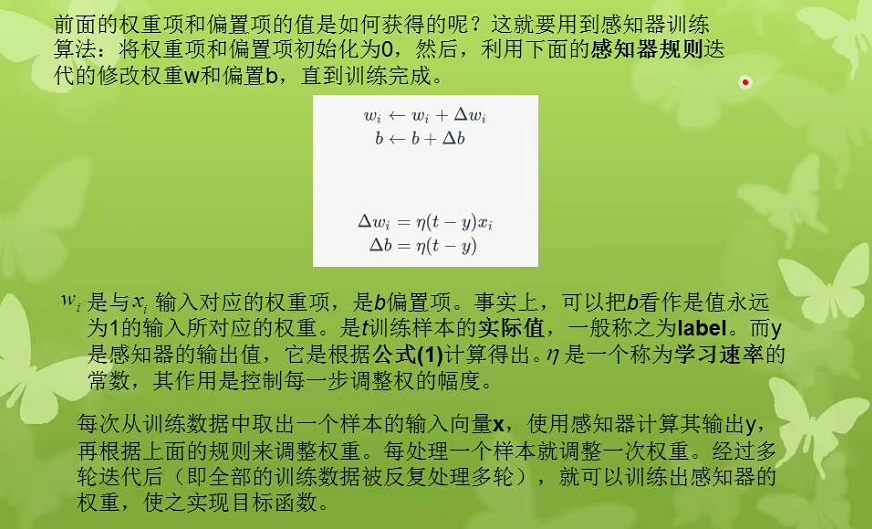
四、简单代码实现
from functools import reduce
class Perceptron(object):
'''
构造函数的初始化
'''
def __init__(self,input_num,activator):
'''
构造函数的初始化
'''
self.activator = activator
self.weights = [0.0 for _ in range(input_num)]
self.bias = 0.0
def __str__(self):
'''
打印学习后的权重值和偏置项
'''
return 'weights\t:%s\nbias\t:%f\n' %(self.weights,self.bias)
def predict(self,input_vec):
'''
输入向量,输出感知器的计算结果
'''
return self.activator(
reduce(lambda a,b: a+b,
list(map(lambda x,w: x*w,
input_vec,self.weights)
),0.0)+self.bias)
def train(self,input_vecs,labels,iteration,rate):
'''
输入训练数据:一组向量、与每个向量对应的label;以及训练轮数、学习率
'''
for i in range(iteration):
self._one_iteration(input_vecs,labels,rate)
def _one_iteration(self,input_vecs,labels,rate):
'''
迭代,把所有的训练数据过一遍
'''
samples = zip(input_vecs,labels)
for (input_vec,label) in samples:
output = self.predict(input_vec)
self._update_weights(input_vec,output,label,rate)
def _update_weights(self,input_vec,output,label,rate):
'''
按照感知器规则更新权重
'''
delta = label - output
self.weights = map(
lambda x, w:w+rate*delta*x,
input_vec,self.weights)
self.weights = list(self.weights)
self.bias += rate*delta
def f(x):
'''
定义激活函数
'''
return 1 if x>0 else 0
def get_training_dataset():
'''
训练数据
'''
input_vecs = [[1,1],[0,0],[1,0],[0,1]]
labels = [1,0,0,0]
return input_vecs,labels
def train_and_perceptron():
'''
训练感知器
'''
p = Perceptron(2,f)
input_vecs,labels = get_training_dataset()
p.train(input_vecs,labels,10,0.1)
return p
if __name__ == '__main__':
and_perception = train_and_perceptron()
print(and_perception)
print('1 and 1 = %d' % and_perception.predict([1,1]))
print('0 and 0 = %d' % and_perception.predict([0,0]))
print('1 and 0 = %d' % and_perception.predict([1,0]))
print('0 and 1 = %d' % and_perception.predict([0,1]))运行结果:
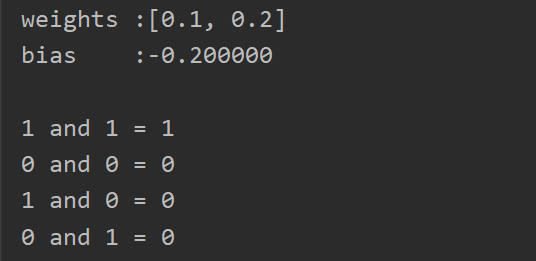

评论区